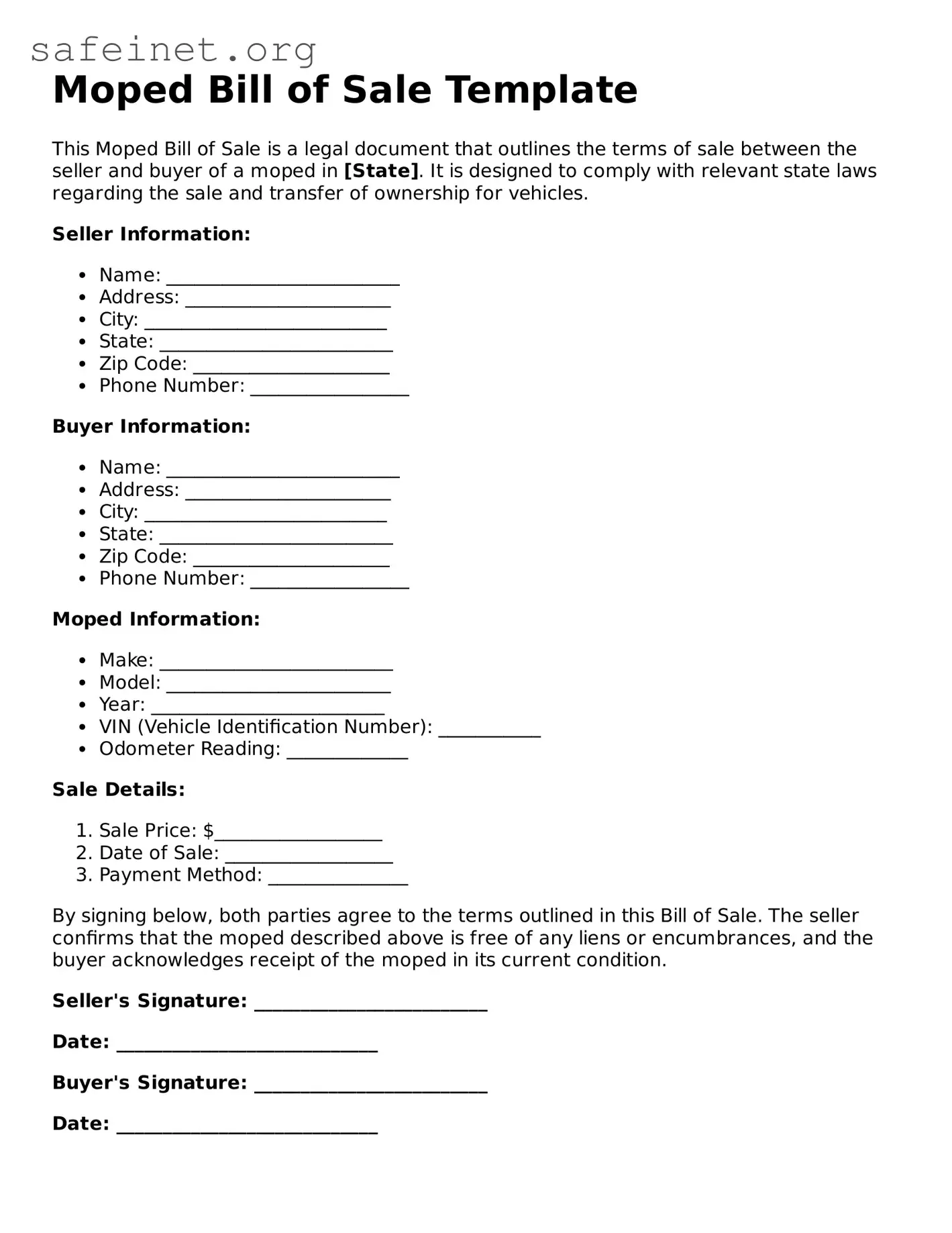What is a Moped Bill of Sale Form?
A Moped Bill of Sale Form is a legal document that outlines the details of a transaction involving the sale or transfer of ownership of a moped. This form serves as proof of the transfer between the seller and the buyer, detailing the specifics of the moped, the sale price, and the parties involved in the transaction.
Why do I need a Moped Bill of Sale?
This form is important for several reasons. First, it acts as a receipt for the transaction, helping the buyer prove ownership. Additionally, it can be needed for registration purposes with the Department of Motor Vehicles (DMV) or to obtain insurance for the moped. Having a clear record of the sale can also protect both parties in case of any future disputes.
What information is typically included in a Moped Bill of Sale?
Generally, the Moped Bill of Sale includes the following information: the names and addresses of both the seller and buyer, the make, model, and vehicle identification number (VIN) of the moped, the purchase price, the date of sale, and any additional terms or conditions agreed upon by both parties. It is essential to ensure that all information is accurate to avoid complications later on.
Is a Moped Bill of Sale required by law?
While a Moped Bill of Sale may not be required in every state, it is highly recommended to have one for the sake of clarity and record-keeping. Some states may require it for registration or titling purposes, so it's wise to check the specific regulations in your state regarding moped transactions.
Can I create my own Moped Bill of Sale?
Yes, you can create your own Moped Bill of Sale. Many templates are available online that can guide you in crafting a document specific to your needs. However, ensure it includes all necessary details and complies with your state’s legal requirements to be effective and binding.
Do both the buyer and seller need to sign the form?
Yes, it is essential for both the buyer and seller to sign the Moped Bill of Sale. Their signatures indicate consent to the transaction and acceptance of the terms outlined in the document. In some states, having a witness or notarization may also add an extra level of validity to the document.
What if there are issues with the moped after the sale?
Once the Moped Bill of Sale is signed, the sale is generally considered final. However, if the seller concealed damage or misrepresented the moped's condition, the buyer may have options for recourse depending on state laws. It’s crucial to be transparent during the sale to avoid disputes.
Can I use a Moped Bill of Sale for other types of vehicles?
The Moped Bill of Sale is tailored specifically for mopeds, but many elements can be similar for other types of vehicles, such as motorcycles or ATVs. However, it’s essential to ensure that the document meets any unique requirements of the specific vehicle in question.
How do I find a template for a Moped Bill of Sale?
Templates for Moped Bills of Sale can easily be found on legal websites, DMV websites, and various online resource platforms. When choosing a template, ensure it is updated to reflect current regulations in your state and fits your specific circumstances regarding the transaction.
What should I do after the sale is complete?
After completing the sale, both the buyer and seller should keep a signed copy of the Moped Bill of Sale for their records. The buyer should also proceed to register the moped with the local DMV, as necessary, and may consider obtaining insurance. It is also wise for the seller to notify their insurance company of the sale.
